Brahmatal Trek is one of the most beautiful treks in Uttrakhand. It is also ideal for beginners. The trail is easy and has all the elements to make this a perfect trek for beginner trekkers – camping, snow, stunning views, and connectivity. Well, connectivity is something which not everyone would like in mountains. However, for a lot of trekkers, it would be a boon as they can stay connected to their loved ones (and do an occasional live video call). Not to forget, the avid social media enthusiasts out there can also do posts on a day-to-day basis and share their journey with the world, something that other Himalayan treks do not offer.
The trek starts from a small village called Lohajung (2,300 Meters above sea level). This village is around 300 km from Rishikesh and it takes around 10-12 hours by road. While there are other routes to reach Lohajung, we chose Rishikesh as it was our assembly point.
Through this blog, we would like to give you a glimpse of the beautiful Brahmatal trek. We will give you practical tips and information. This will be especially useful if you’re a beginner Himalayan trekker.
Basic Information about the Brahmatal Trek:
- Total Trek Distance – 21 Kms (Avg Trekking per day – 7kms)
- Max Altitude – 3,600 Meters
- Min Temperature – (-5) Degrees if less/no snow, (-15) if heavy snow – at night
- Connectivity – 4G available at Lohajung, intermittent connectivity at Jhandi Top or Brahmatal Top
- Best Season for the trek – Dec to Feb (for snow)
- Number of camps – 3 (Camp 1 – Bekaltal, Camp 2 – Near Brahmatal, Camp 3 – Daldum). If it snows heavily, Camp 2 will be cancelled
- Terrain – Forests in first 9 km, then meadows
- Homestays at Lohajung – Basic amenities, may get hot water for bathroom, western toilets at few homestays, a good number of shops available for water, snacks, toiletries, fruits, etc.
- Food – mostly vegetarian (may get eggs)
Photoblog on the Trek to Brahmatal Top:
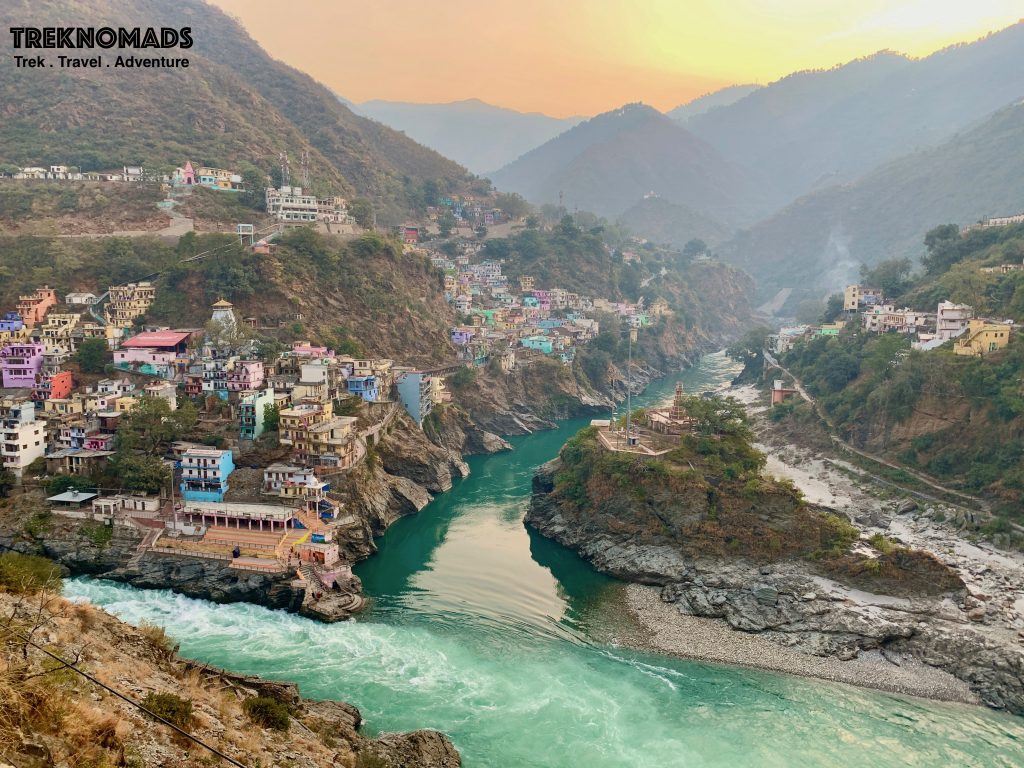
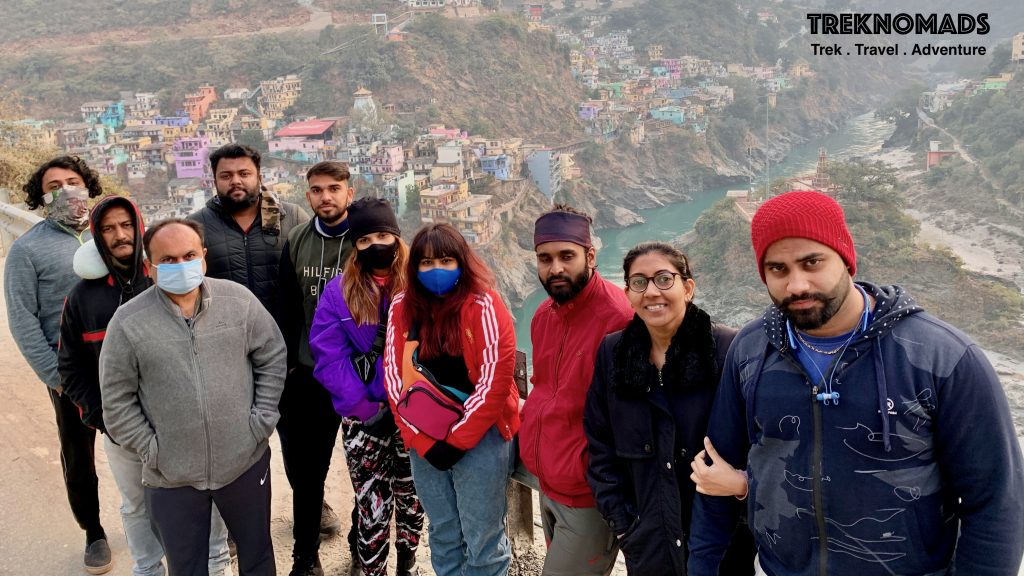
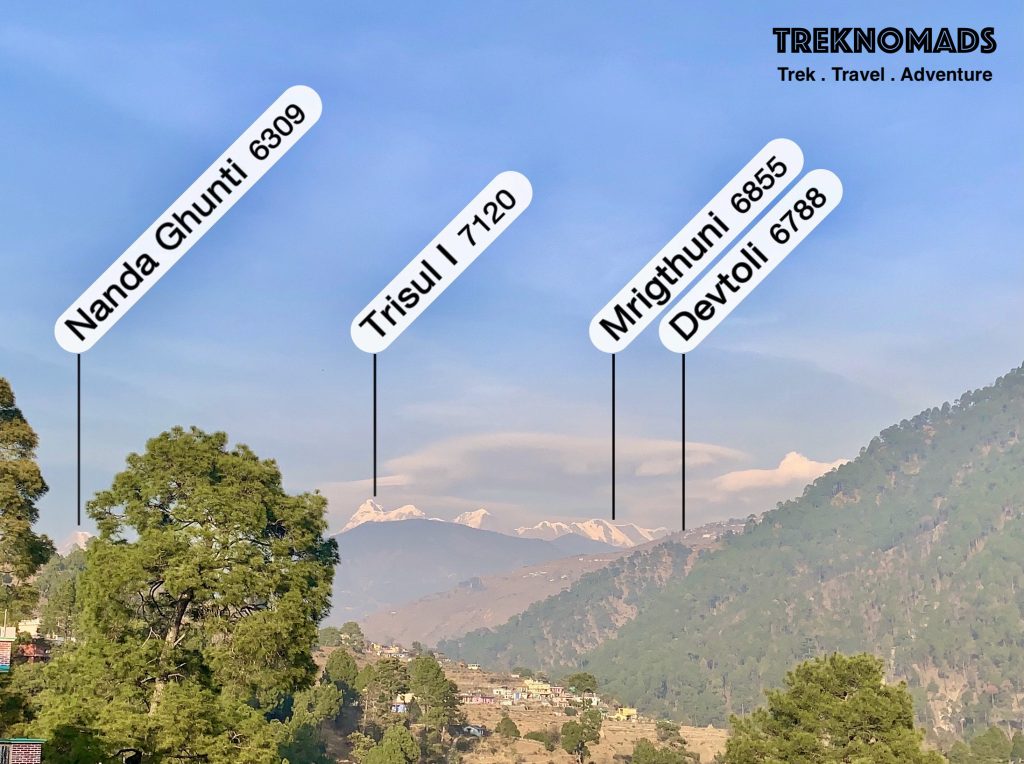
Tip: In case you forget to carry enough winter wear, this pit stop in between is a good place for you to shop for winter wear. You may not get it in Lohajung.
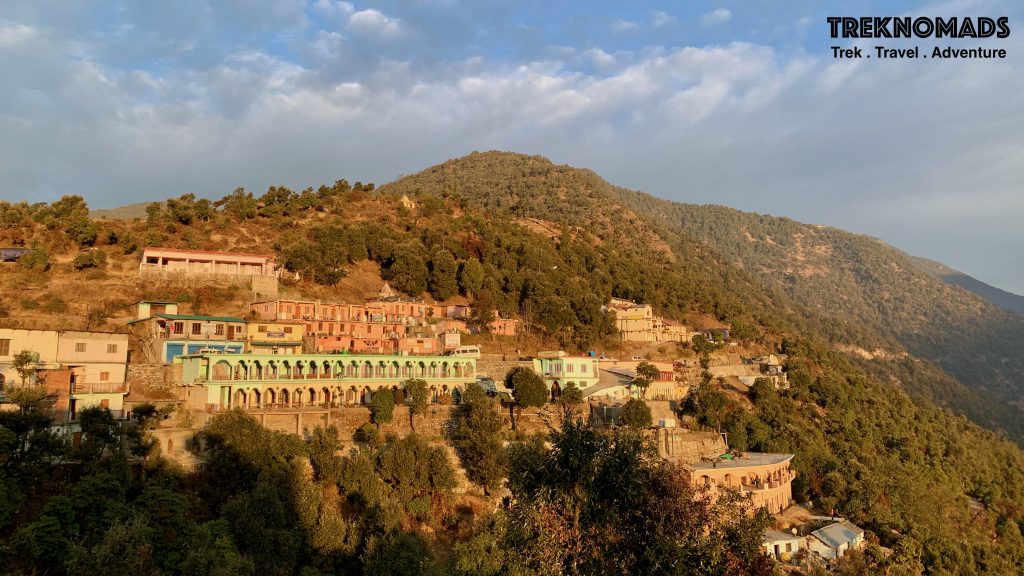
Tip: As mentioned earlier, the facilities in the village are basic. So go prepared with your medicines and other required items. Road and transport availability is good at Lohajung. Avoid travelling or going out at night. There are wild animals like leopards, jackals, dogs, and bears in the surrounding jungles.
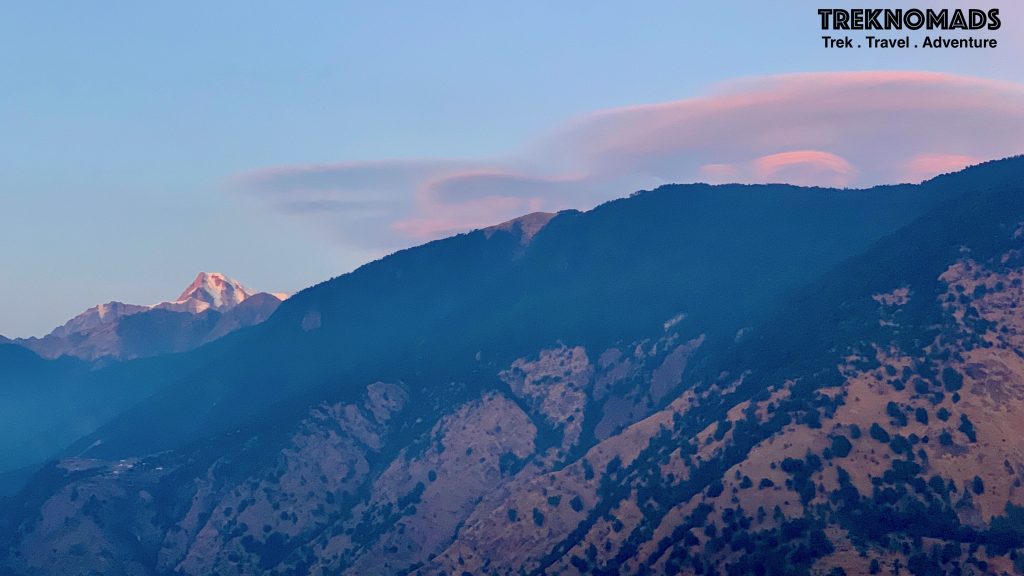
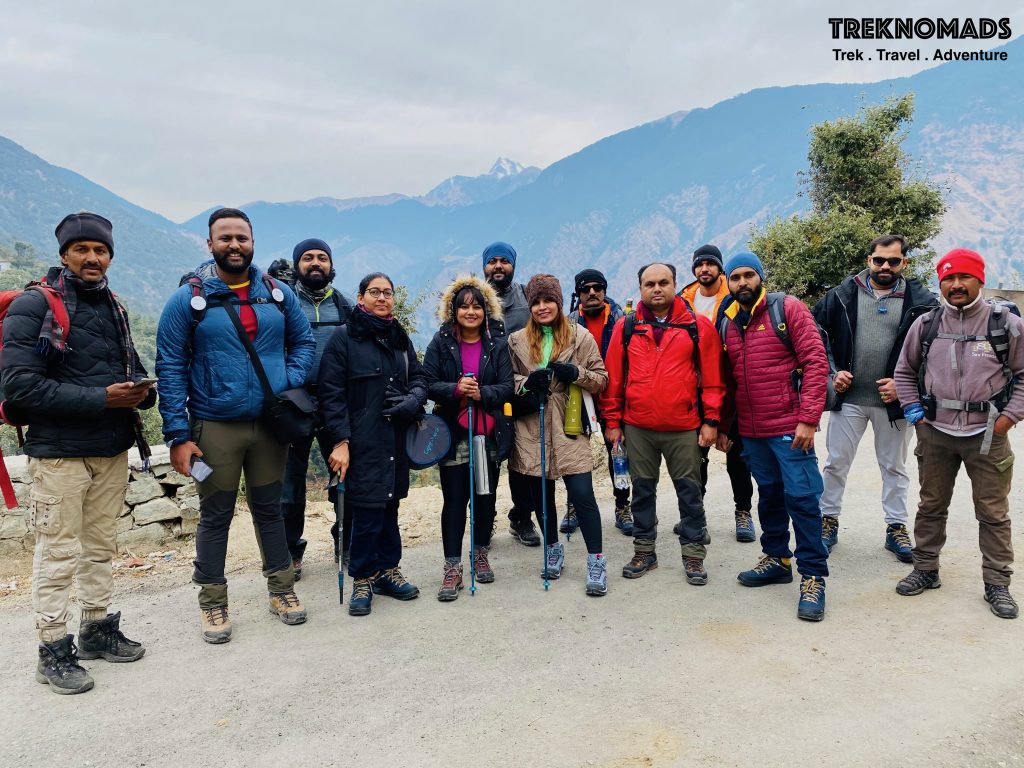
Tip: It is advised to not shower on the day of the trek as you would need to start the trek early. So try to take a good shower at Lohajung (if you get hot water).
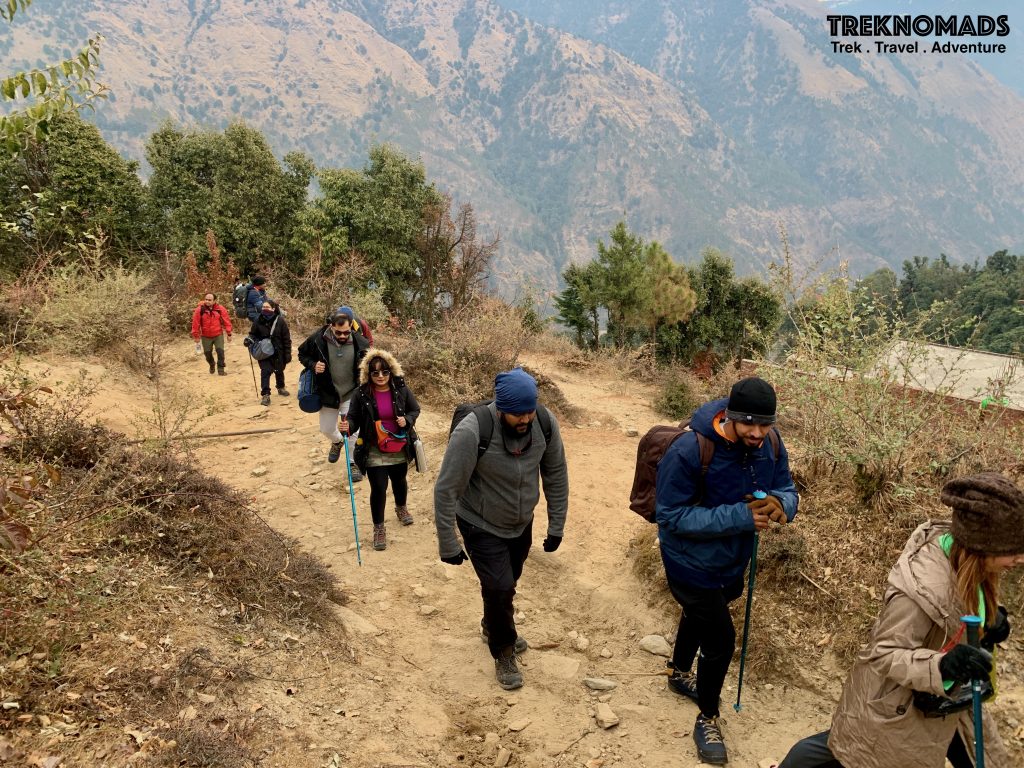
Tip: When you do a winter trek, it is advisable not to wear thermals while climbing. Keep a light jacket or fleece, if you feel too cold. Don’t carry a lot of luggage during the trek. If you have more luggage, you can hire a porter or pony. They charge around Rs 300 per bag per day. Read more on winter trekking here.

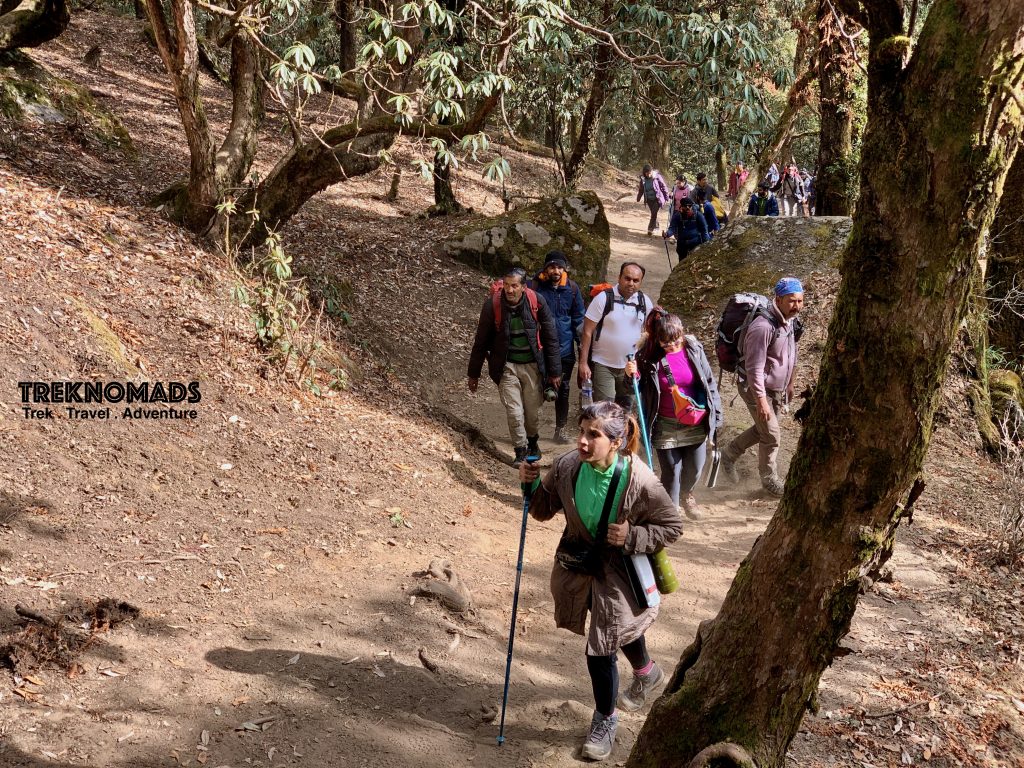
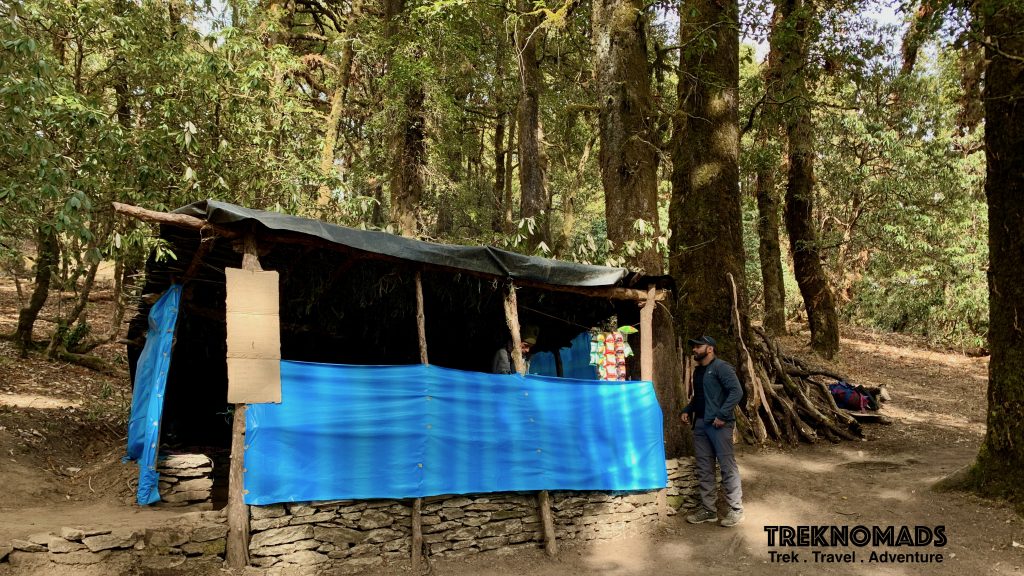
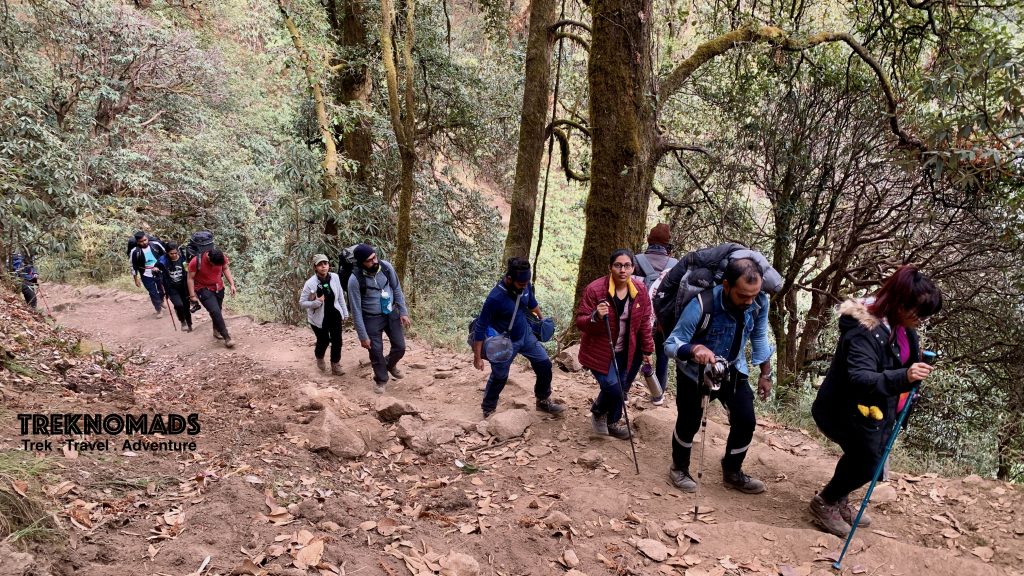
Tip: If you are trekking on a trail where there are mules, always move towards the hillside when the mules are coming. The mules may accidentally push you on the valley side. Avoid feeding or beating the mules or any other animals on the trail. Carry at least 2 litres of water on the trail. Keep on drinking water every 10/15 mins to keep yourself hydrated.
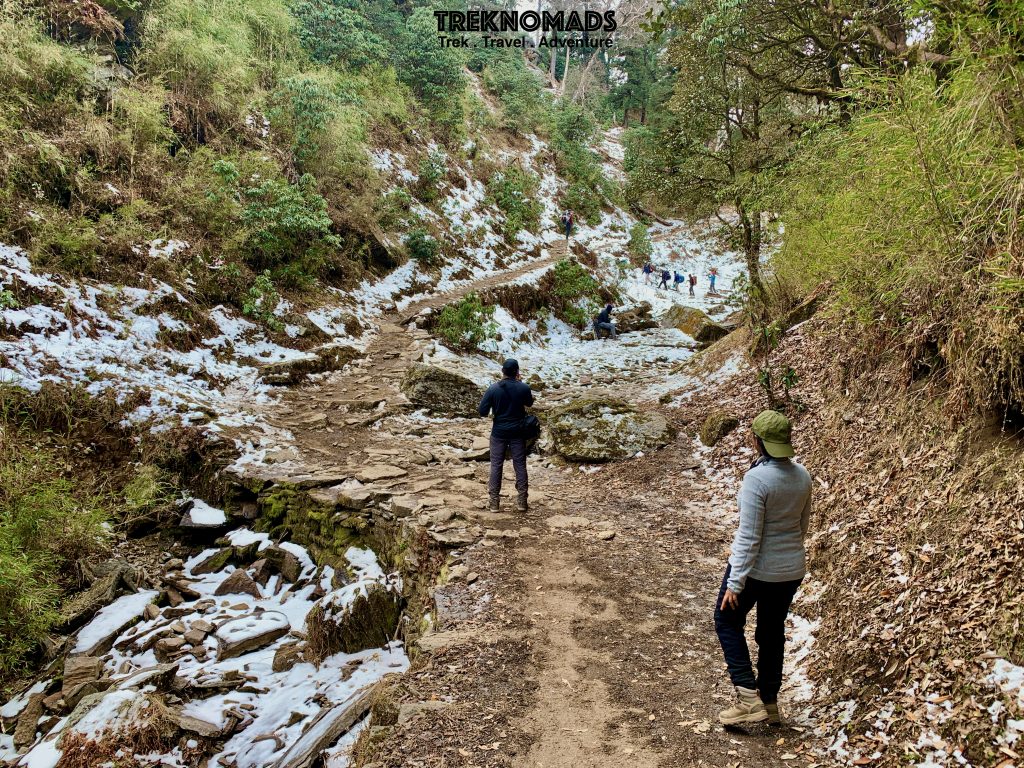
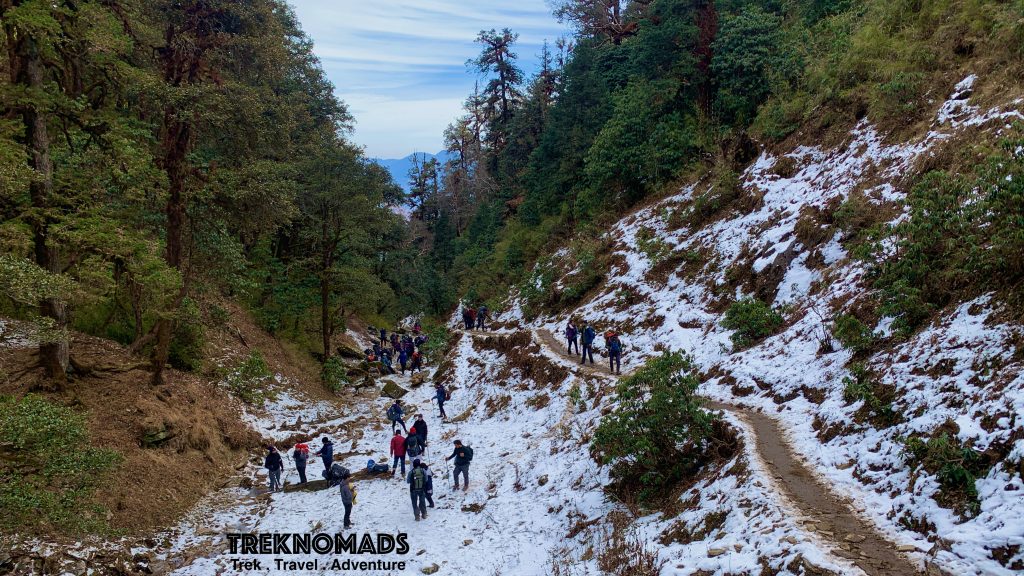

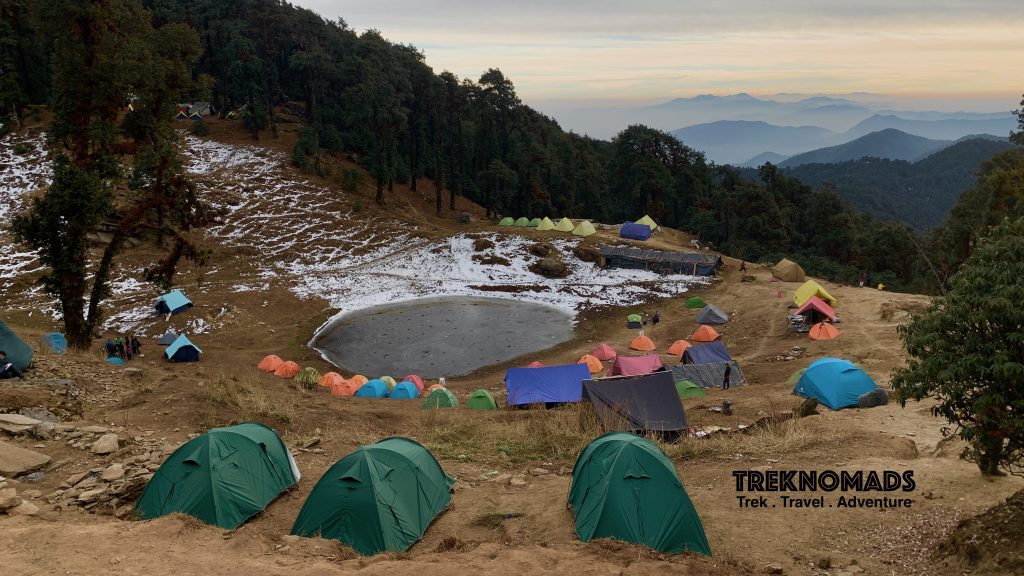
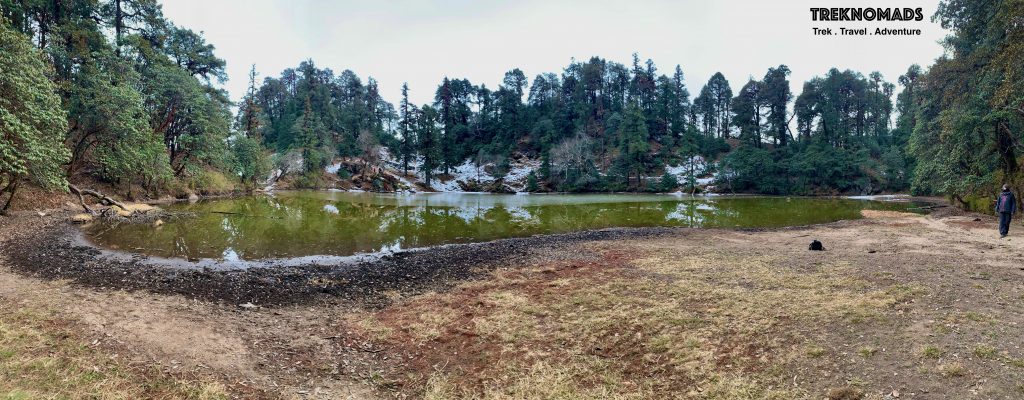



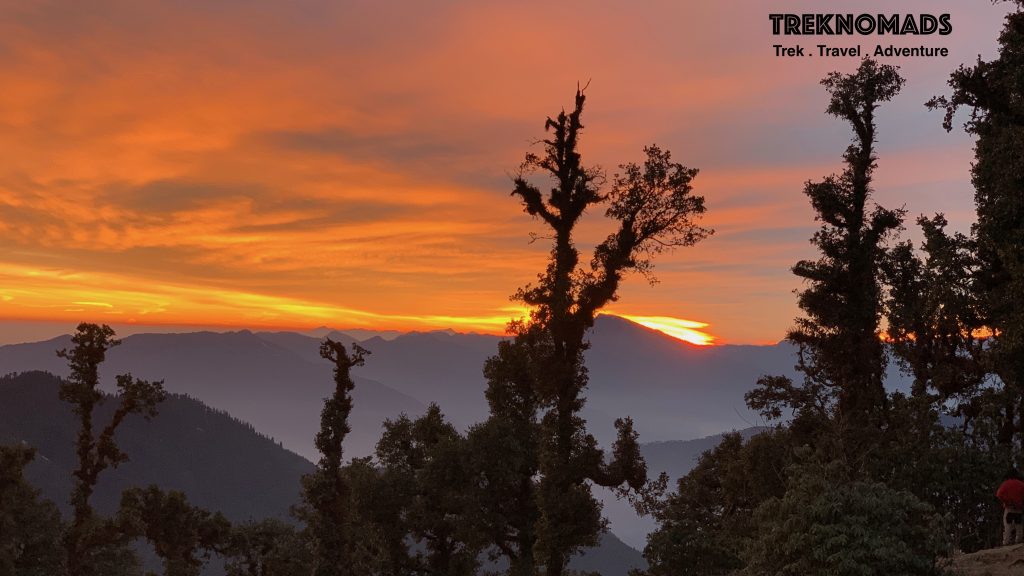
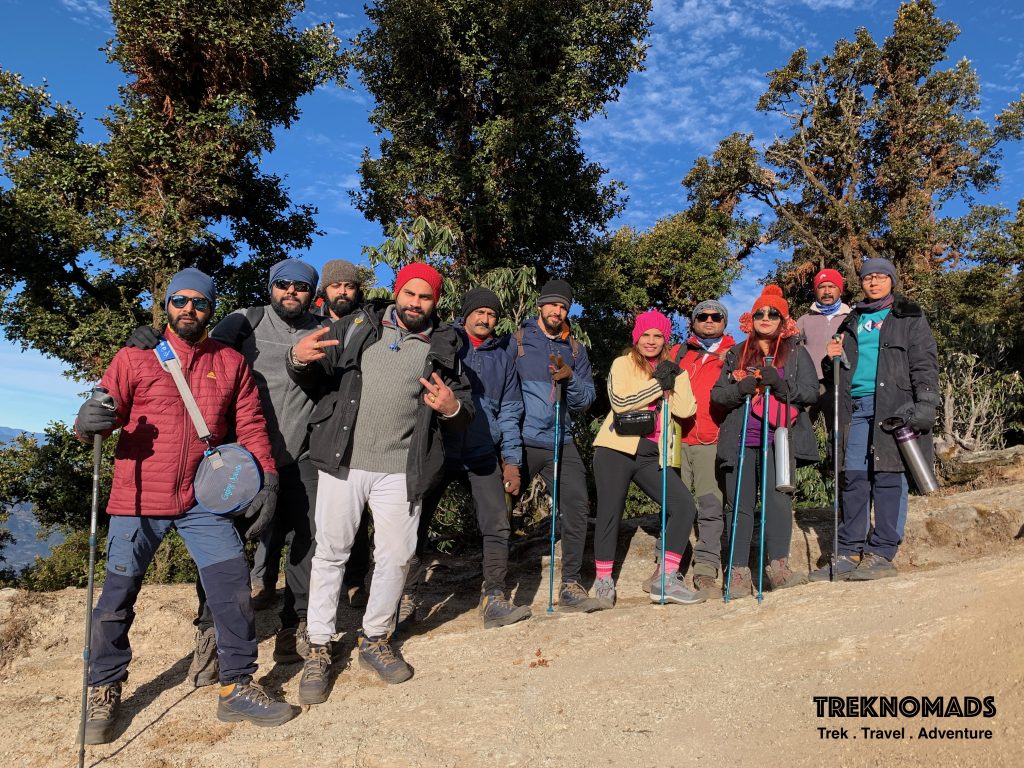
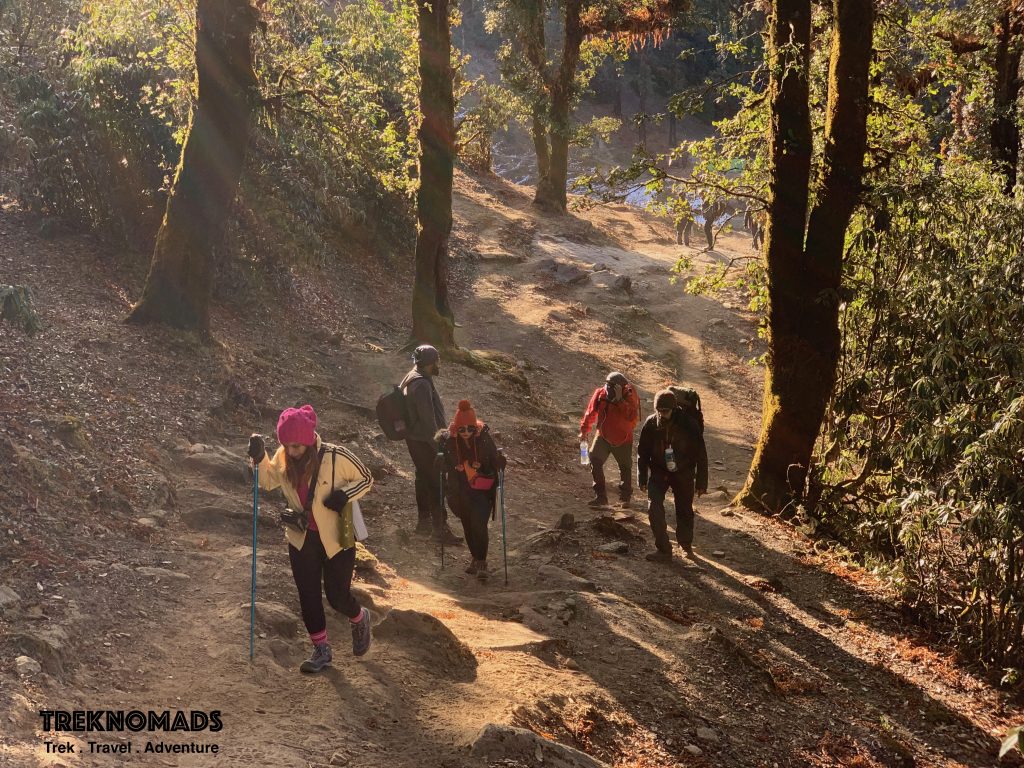
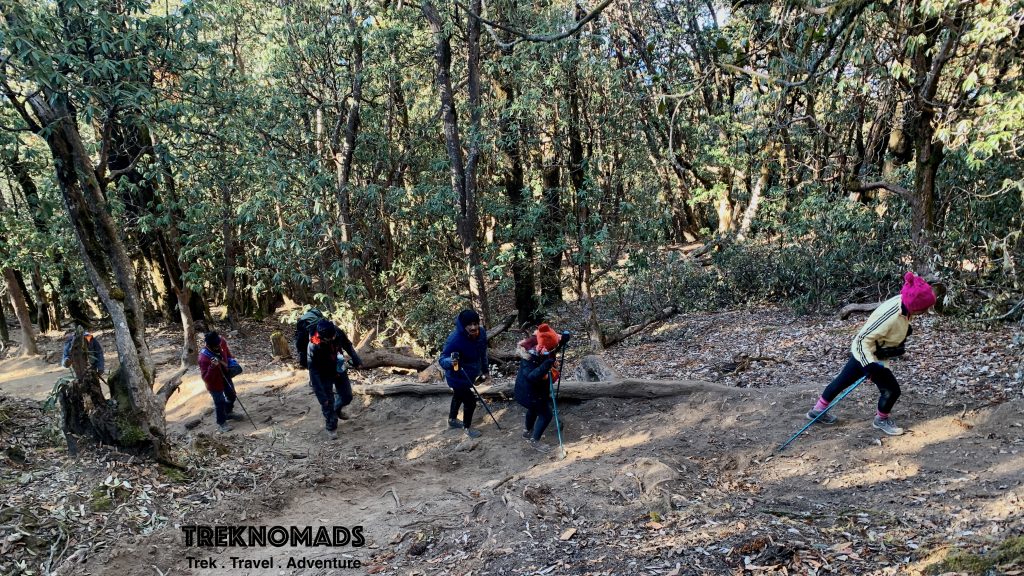
Tip: Each trekker must carry 2 liters of water as there is no water source on the trail from Bekaltal to camp 2. During peak winter season, you can fill up a thermos flask with water so that the water in the bottle does not freeze.
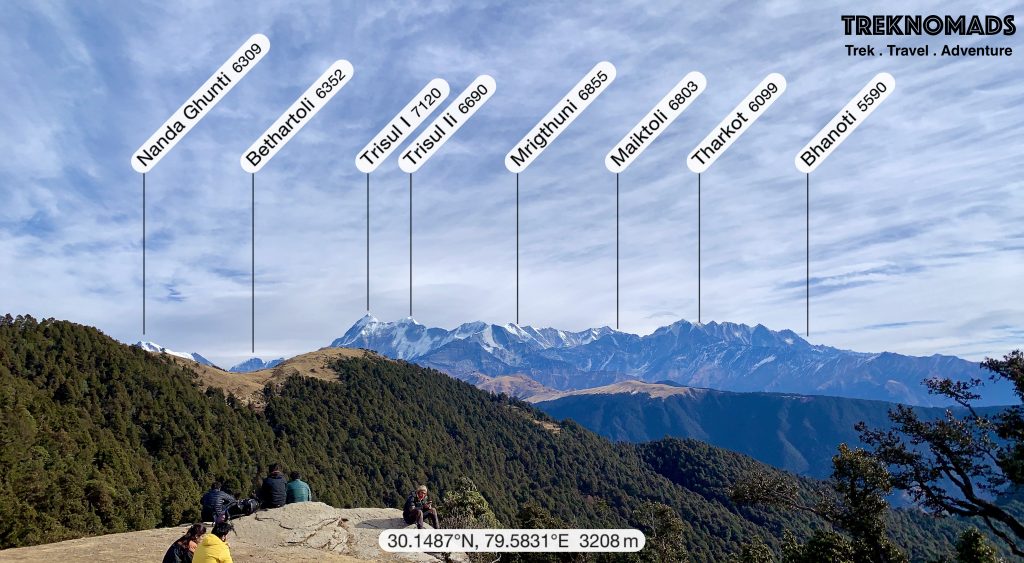

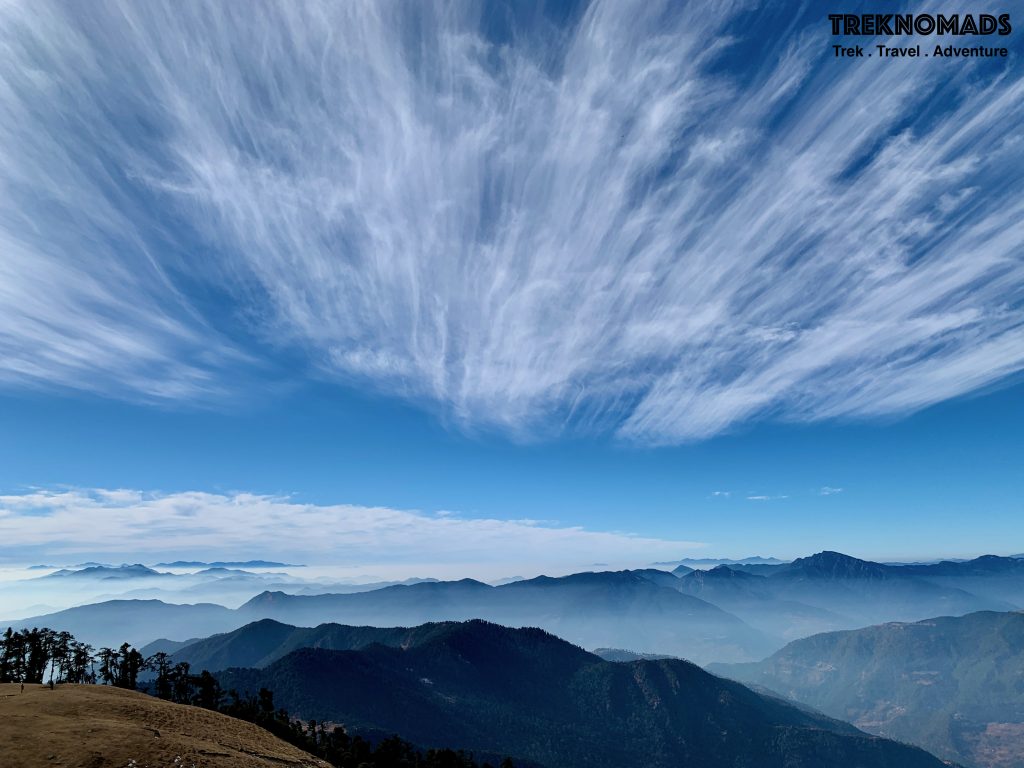
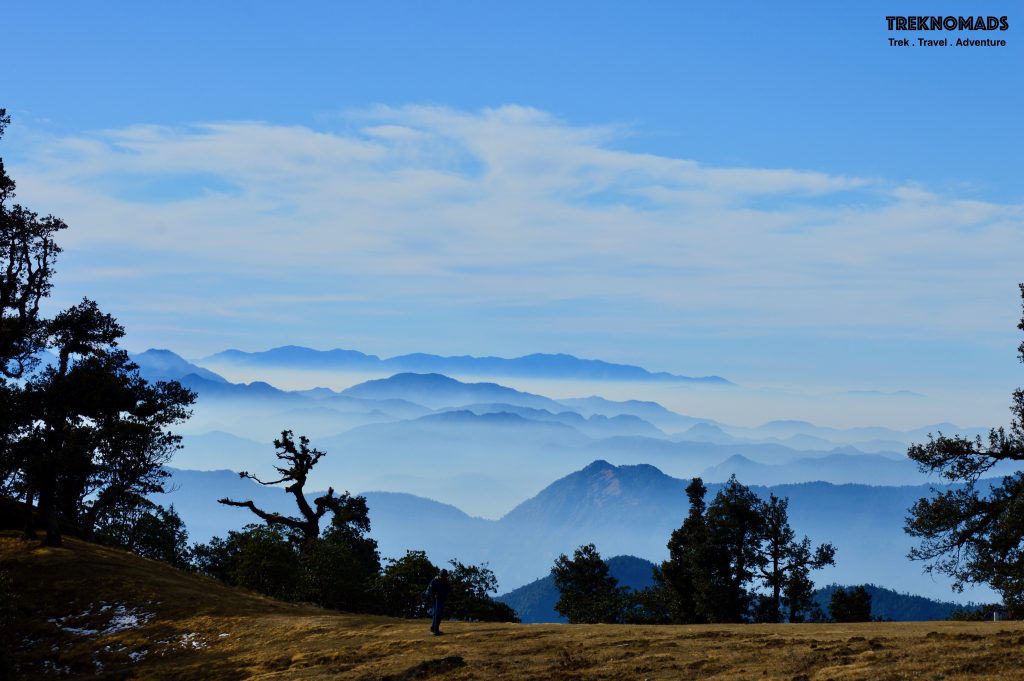
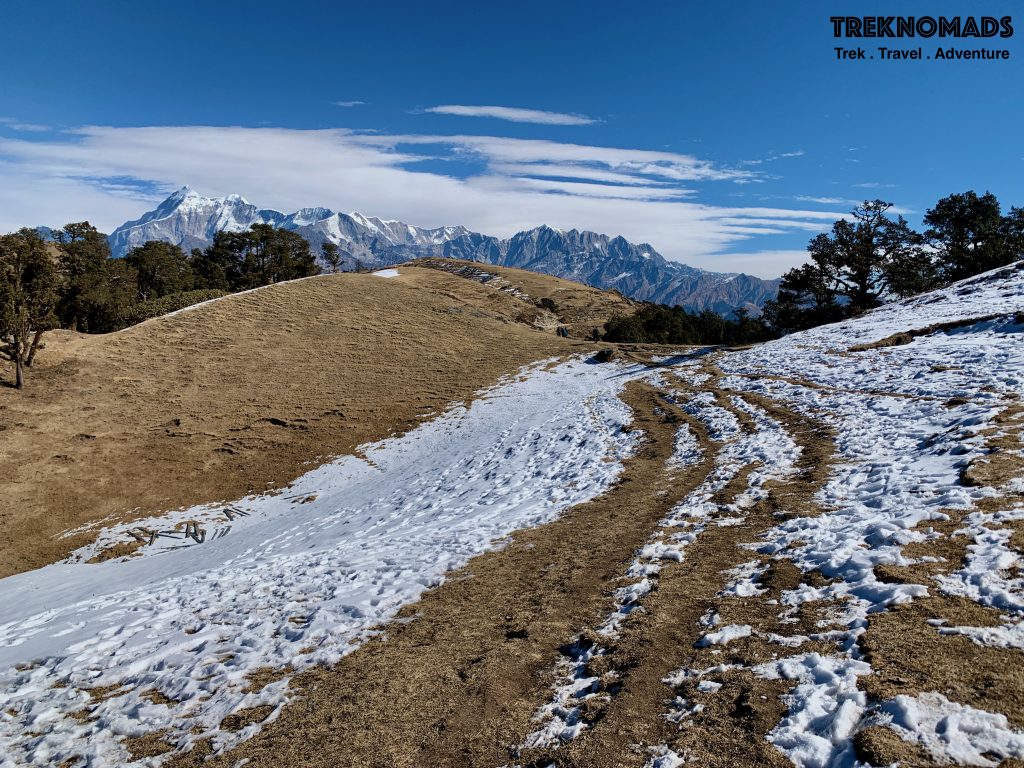
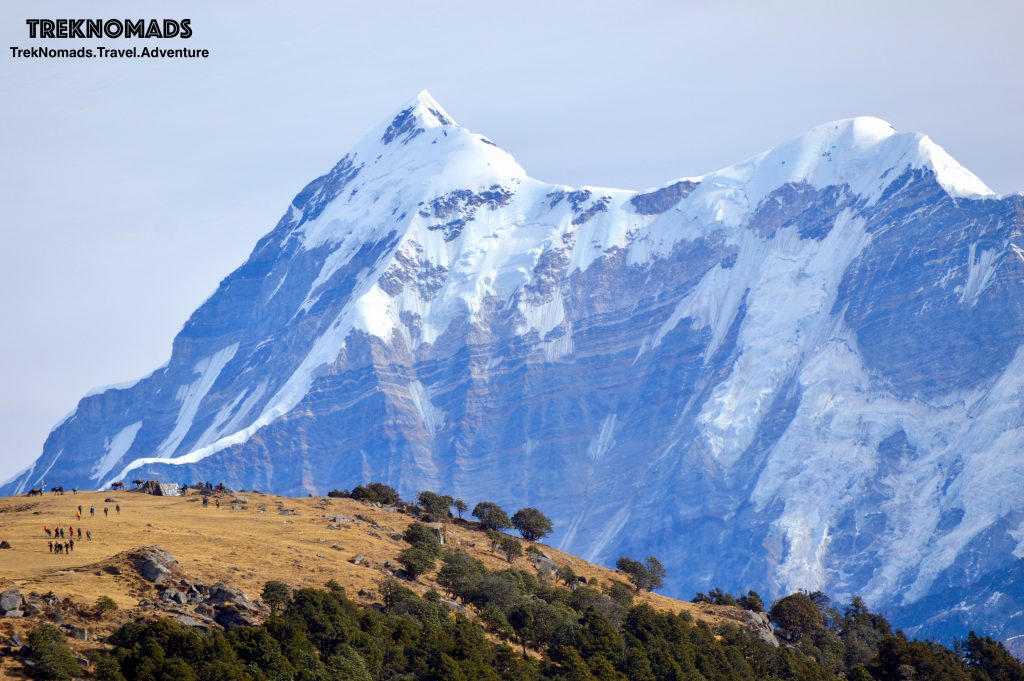
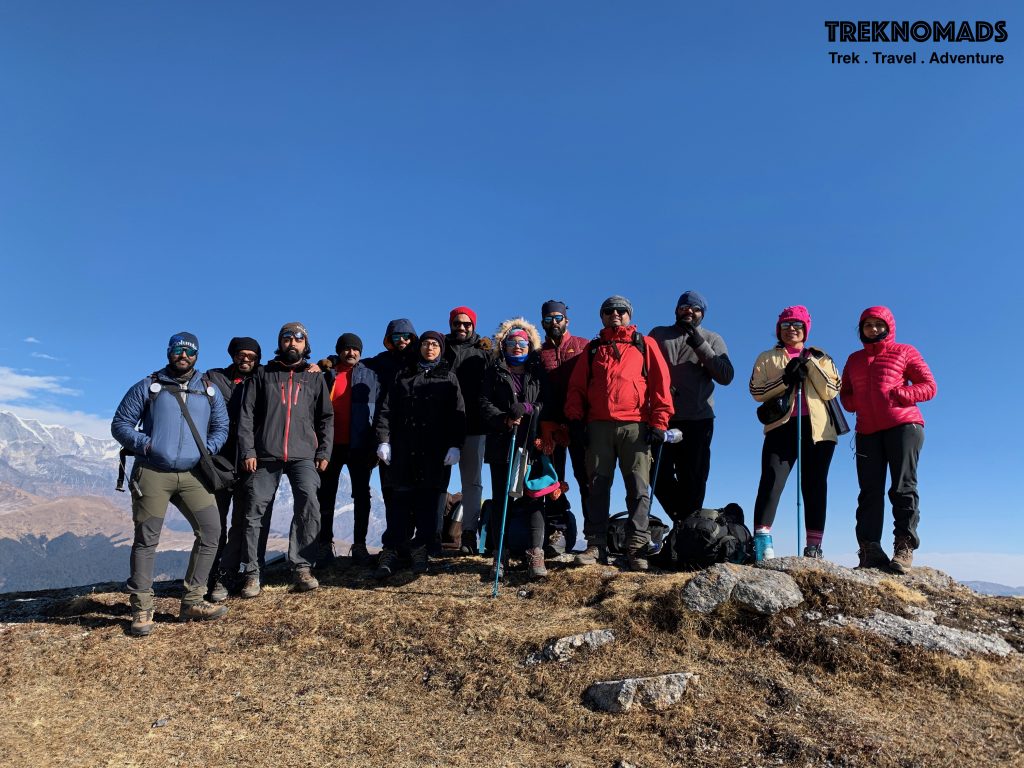
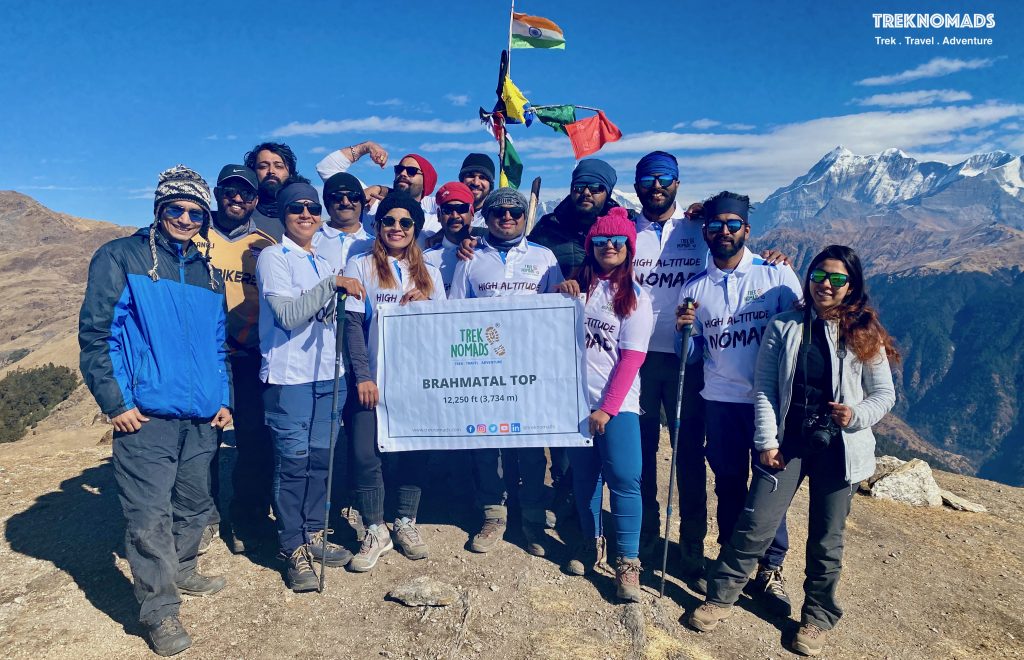
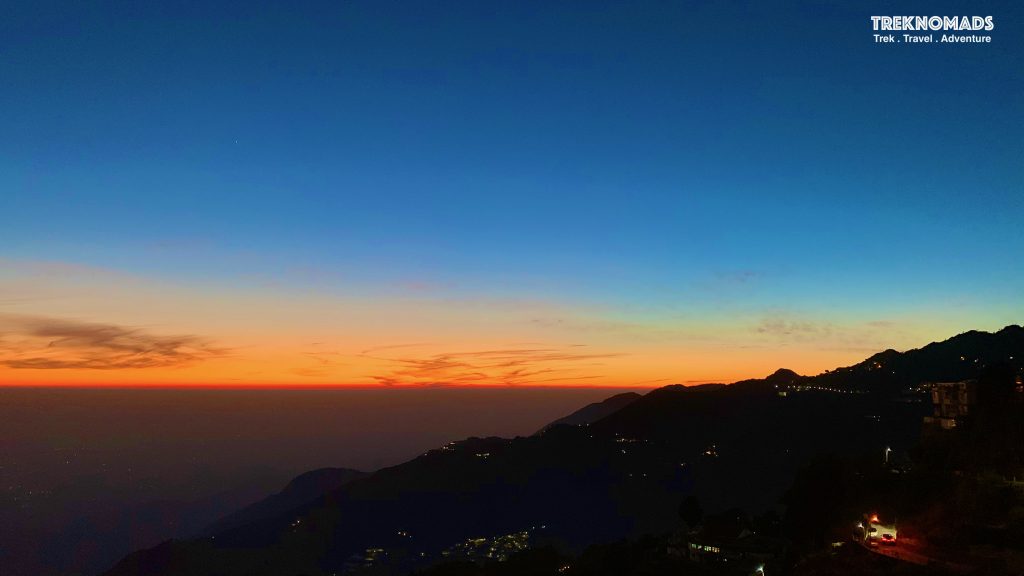
We went on this trek from 19th to 24th Dec 2020. The Corona pandemic, lockdown, and social distancing had taken a toll on all of us. So this was a very nice break for us. We were expecting heavy snow during this time. However, we encountered very less snow. As per the latest news, it started snowing around 8th January 2021. The batches from January till February will experience perfect winter trekking.
Few things to note while travelling/trekking during Corona.
- Do not travel if you have flu-like symptoms – for your and other’s safety.
- Read government guidelines and keep paperwork ready before the trek.
- Always wear the mask during the travel and in the trek if possible.
- Maintain social distancing with the locals and fellow trekkers. Try to avoid handshakes or any kind of contact.
- If you develop symptoms during the trek, inform the trek leader and try to go down to basecamp and quarantine till the trek completes.
- Carry sanitizer, soap, and basic medicines while trekking.
- Self-quarantine yourself for 3-4 days after coming from the trek at your home location.
- Respect locals, the environment, and your fellow trekkers.
One more thing I want to highlight in a big way is, tipping. Indians generally do not believe in tipping culture. In a few western countries, tipping is almost mandatory. For example, in Kilimanjaro Trek, the tipping amount is decided by the government and is mandatory.
We should also be considerate and be generous tippers during the trek. The local helpers, cooks, local trek leaders, drivers are mostly from poor families with an average income of <Rs 2,500 per month. Most of their livelihood is during the trekking season.
As trekkers, we should tip at least Rs 300-500 per trekker. You can also give your old jackets/clothes, shoes, medicines to the needy.
Stay Safe and Happy Trekking!
FAQ’S
Kedarkantha Trek or Brahmatal Trek during mid-February?
Both Kedarkantha and Brahmatal treks are breathtakingly beautiful and sought after. However, there are some differences between the two treks, particularly in terms of difficulty, terrain, and overall experience.
Here’s a comparison to help you decide between the Kedarkantha Trek and the Brahmatal Trek. The time and conditions considered for comparison correspond to the mid-Feb duration.
- Difficulty: A moderate-difficulty trek, Kedarkantah is suitable for experts and beginners alike. The ascents and descents are fairly gradual, with only a couple of steeper sections. The Brahmatal trek, thought of moderate difficulty again, is more challenging than the Kedarkantha trek due to the higher number of steeper sections and longer trekking hours.
- Terrain: The trek to the Kedarkantha Summit involves hiking on snow, especially during mid-February. The trail passes through dense forests, beautiful meadows, and snow-covered landscapes. The Brahmatal trek The trek involves hiking on snow throughout the route during mid-February. The trail takes you through dense forests, open meadows, and a beautiful frozen lake (Brahmatal Lake) surrounded by snow-capped peaks
- Highlights: The Kedarkantha Summit (3,800m) offers breathtaking views of the Himalayan peaks, including Swargarohini, Black Peak, and Bandarpoonch. The trek is known for its stunning winter landscapes and is popular for snow trekking.
- Weather Considerations (Mid-February): Both treks take place during the winter season, and the weather conditions can be cold, especially during mid-February. The temperatures during the night and early mornings can drop significantly, often below freezing point, so trekkers must be prepared with appropriate cold-weather gear.
- Trekker’s Experience and Preference: Your choice between the Kedarkantha Trek and the Brahmatal Trek may also depend on your prior trekking experience, fitness level, and personal preferences. If you are a beginner or looking for a relatively easier winter trek, the Kedarkantha Trek might be a better choice. On the other hand, if you seek a more adventurous and slightly challenging winter trek with stunning frozen lake views, the Brahmatal Trek could be the one for you.
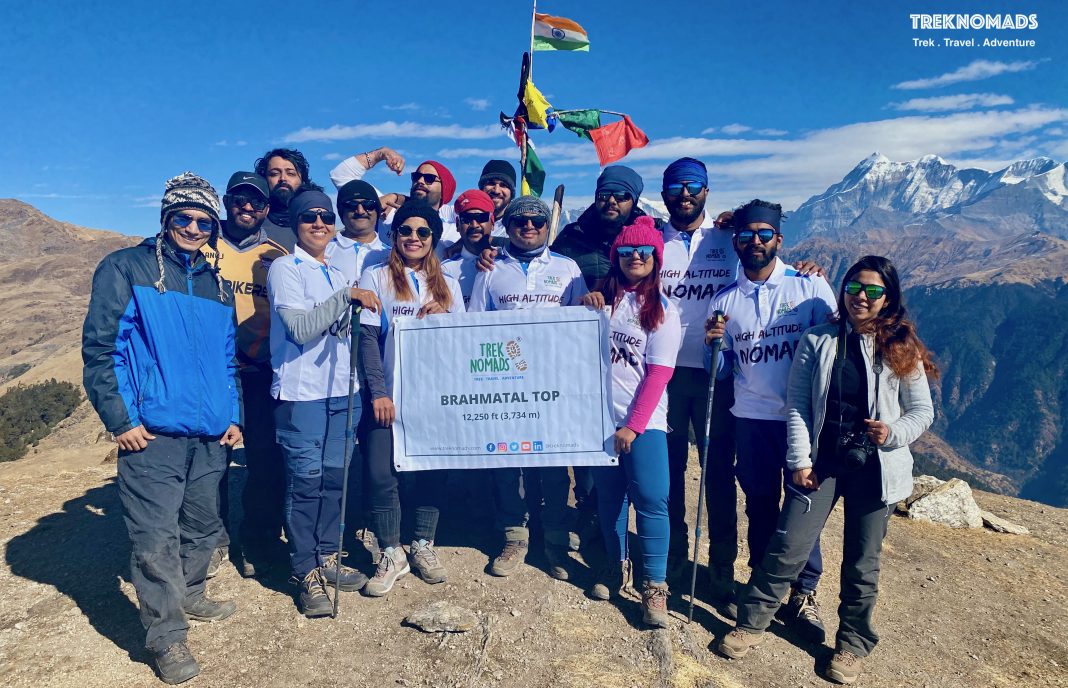

Thanks Treknomads for wonderful insight., Would plan to try some day..